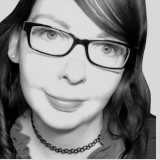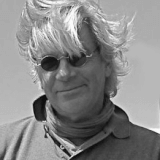
Therapeutic techniques are excellent. Theory is so so.
Dr. Claire Weekes, an Australian psychiatrist who lived between 1903 and 1990, had some revolutionary ideas about anxiety that are still noted today for being ahead of their time. The books she wrote on the nature of anxiety, which also included the details of the simple exercises she used to treat both her patients’ anxiety and her own, are still sold today.
This article will provide an overview of the theory and some of the exercises outlined by Dr. Claire Weekes.
Claire Weekes’ Books
The Weekes' system is one of many technologies for dealing with anxiety. Other options are cognitive behavioral therapy (CBT), mindfulness, meditation and extinction therapy.
Dr. Claire Weekes distrusted the methods of psychoanalysis being used during her lifetime. She wanted simpler explanations for anxiety that did not involve sifting through childhood to latch onto (or in some cases, imagine or create) any event that could be blamed for the disorder. She also wanted a treatment that did not involve focusing all one’s attention on changing beliefs and feelings surrounding that event, when the event might not even have to do with the disorder.
Claire Weekes wrote 5 books over the course of her lifetime.
- Self Help For Your Nerves (1962)
- Peace from Nervous Suffering (1972)
- Simple Effective Treatment of Agoraphobia (1976)
- More Help for Your Nerves (1984)
- The Latest Help for Your Nerves (1989)
Her first book sold over 300,000 copies and had been translated into eight languages. Her worldwide TV and radio appearances were eventually compiled into audio and video files, which can still be accessed today.
Claire Weekes’ Approach to Anxiety
To understand Dr. Weekes approach to anxiety, it is helpful to break it down into three categories: her theory, her perspective on anxiety and her therapeutic techniques. Her theory is speculative but plausible. The strongest aspects of her work are her perspective on anxiety — accept it — and the therapeutic techniques that she developed. Her technique and perspective are wise and they work..
Dr. Weekes’ Perspective on Anxiety
The almost natural tendency that we all have in the face of anxiety, or any painful emotion for that matter is to reject it. We reject anxiety and other painful experiences by repressing them.
In essence, Dr. Weekes says that a person should do just the opposite and accept their anxiety, as opposed to fighting it off or denying it. She herself, was able to accept her own anxiety because she came to the point where she saw it as merely the functioning of her nervous system.
She believes and teaches her patients that having anxiety is neither a flaw nor a shortcoming. There is nothing wrong with you. She teaches that accepting your anxiety is important because it opens the door to living with your anxiety. This is the foundation to Dr. Weekes approach to anxiety.
Dr. Weekes’ Theory of Anxiety
The main principle of Dr. Claire Weekes’ theory of the causes of mental illness in general, and anxiety in particular, are three factors work together to cause them. They are:
- Sensitization Dr. Weekes defines sensitization as “a state in which nerves are conditioned to react to stress in an exaggerated way; that is, they bring unusually intense feelings when under stress, and at times with alarming swiftness.” She says that severe sensitization produces the symptoms of anxiety: pounding heart, churning stomach, sweaty palms, pressure headaches and so forth.
Dr. Weekes sees most mental illness, for which she uses the term nervous illness, and severe anxiety as being an exaggeration of the symptoms of stress by severe sensitization. In Dr. Weekes’ view, anxiety is caused by prolonged and severe sensitization. What, then, causes prolonged sensitization?
- Prolonged sensitization Dr. Weekes says that prolonged sensitization is caused by two factors that she calls bewilderment and fear. In her words, “Bewilderment and fear keep sensitization alive.”
- Bewilderment Bewilderment is a state of mind in which a person is constantly trying to figure out the cause of their anxiety. What is wrong with me? Why am I anxious all of the time. What can I do to get better? Ultimately, when a person is unable to answer these questions, they become bewildered. They become unable to find a way to cope with their anxiety, and this brings fear.
- Fear Finally, in Dr. Weekes’ theory, fear is fear of the symptoms of anxiety. After finding that you can’t think your way out of your anxiety, you feel that you can’t cure your anxiety and you become afraid of it. You avoid situations that cause you to be anxious, and when your symptoms of anxiety occur, you become engulfed in fear of them.
Dr. Weekes felt that it was not necessary to psychoanalyze yourself to figure out why some past event caused you be have anxiety. She advocated a different and more down to earth approach to anxiety.
Claire Weekes’ Strategy for Overcoming Anxiety
The crux of Dr. Weekes’ approach to anxiety is that of leaving your mind in its natural state. Her technique is based on the idea that if you leave your mind in its natural state, your anxiety or panic attacks will pass by quickly and disappear. In contrast, It’s just like a river. If you watch a leaf floating on the surface of a river, it will appear, float by you and disappear. It is the same with anxiety. Or for that matter, thoughts and emotions.
If, in contrast, you try to resist your anxiety and panic attacks, they will persist and remain with you for long periods of time. On the basis of this understanding, there are three stages to Dr. Weekes’ approach to coping with anxiety. They are:
- Learn to Accept Your Anxiety Panic Accepting panic, or more specifically the symptoms of panic (such as depersonalization or the feeling that the world around you is “unreal,” a rapid heart rate, rapid breathing, and flushing) as they occurred is the foundation of the Weekes method.
Once again, the normal response to emotional pain or anxiety is to try and avoid it. You can avoid anxiety by repressing it or by avoiding the situations that trigger your anxiety.If you repress your anxiety or deny it, it will persist and you will become afraid of it.
So the thing to do with anxiety is to accept its presence in your mind and body. This does not mean that you will like the anxiety or panic attack. But it does mean that you will accept that it is happening and let it take its own natural course. This will set you up for the second step: float on the anxiety.
- “Float Through” Your Anxiety Floating on anxiety is basically a matter of separating yourself from you anxiety. You don’t live in the midst of your anxiety. You don’t try to change it in any way. You don’t try to repress it. You don’t fear your anxiety. You don’t believe it You don’t analyze it and try to understand why you are panicking. You just float on top of it and let it pass. Or you can stand on the side of the anxiety in your stream of consciousness and let it pass by. This sets you up for the third stage of coping with and relieving your anxiety: let it pass.
- “Let Time Pass” Basically, this means that you want to experience the physical and mental sensations of anxiety and panic and let them pass. They will pass by. And the sooner you accept them and let them pass by in their natural state, the sooner your symptoms will disappear.
Another aspect of Dr. Weekes’ approach is that she recommended not avoiding the situations that trigger your anxiety and panic attacks. She suggested that you should face them and see them as opportunities to learn how to cope with and handle your panic attacks. Use them as opportunities to build up your skills and to build up your confidence that you can successfully handle your anxiety and panic attacks. In other words, don’t be afraid of your anxiety and fear. Face them gently without judging yourself.











